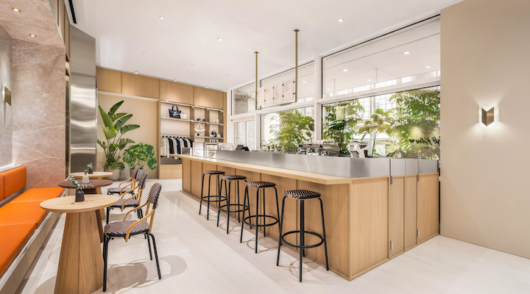Traditional retail and F&B businesses are finding opportunities to connect with consumers and compete in the online space through Nintendo’s augmented reality game Pokemon Go.
AR (augmented reality) and VR (virtual reality) for commercial and retail purposes has become a global trend, says property management company CBRE director for Hong Kong/Southern China/Taiwan Joe Lin.
“We foresee more innovative user experiences being introduced in the near future following the huge success of Pokemon Go, subsequently changing consumption patterns and creating more opportunities for retailers.”
Lin even goes so far as to advise retailers to strategically incorporate technology in their marketing, payment, sales, data mining and user-experience initiatives in order to survive and succeed in the ever-changing retail landscape.
Since its launch this month, Pokemon Go has topped the “most downloaded” charts for both the Android and Apple app stores, and picked up 65 million US users in the week after its launch.
Pokemon Go’s launch in Japan, where it was invented, was delayed until last week because of a media leak that McDonald’s Japan would make its restaurants available as key locations for players. The news sent the food company’s shares soaring.
Hong Kong potential
Japan has joined the US, UK, Australia, continental Europe and New Zealand in the Pokemon Go craze, which this week hit Hong Kong where eCommerce fashion retailer Grana joined the “Pokemon universe” by luring a cartoon character into The Fitting Room (TFR) in Sheung Wan.
CBRE believes Pokemon Go will have a positive impact on the subdued retail market in Hong Kong in the short term. “The craze may potentially stimulate local consumption if retailers use Pokemon Go by providing related discounts or special offers,” says Lin.
“Consumers in Hong Kong are typically drawn to trends, and Pokemon Go players have been enticed to stay longer in locations with ‘PokeStops’ and ‘Gyms’ [locations where players can battle one another or find new monsters to capture].
“The app also encourages young adults and teenagers to step out from their homes, which will potentially lead to increased consumption of food and beverages.”
Lin says shopping mall landlords in Hong Kong have been very responsive to the new craze. Some malls have already launched promotional activities to attract foot traffic and boost spending.
“The swift responses from retailers demonstrates their flexibility in adapting to the market in order to endure the unfavorable retail environment.”
Gaining force
VR and AR are rapidly gaining force in retail, according to JLL Real Views. VR is a totally computer-generated environment accessed through a special headset, sometimes with sensor gloves or other aids, while AR overlays digital elements on a real-life image in a digital display. It is estimated VR/AR will be an $80 billion industry by 2025, part of which will be in a retail context.
Pokemon Go’s biggest advantage is that it is easily accessible as a free app.
However, augmented reality in the retail experience is not new. In the US, a Boston Retail Partners survey found that 31 per cent of retailers use gamification in their loyalty programs, while 87 per cent are considering using this tactic in the next five years.
As an example, Reebok put up an outdoor billboard with a built-in speed cam. Anyone who could run at least 10.5 mph (16.8 km/h) past the advertisement could win a pair of shoes.
In Australia, retail brands such as KFC, Sportbet, TAB and Woolworths have targeted advertising toward Pokemon Go players. Woolworths has posted tips on how gamers can catch Pokemon in its stores.
Restaurant owners and retailers can fill out an online form to request “PokeStops” or “Gyms” in their vicinity, but in most countries already the game’s developer and publisher Niantic Inc, in which Nintendo has a stake, has stopped accepting submissions.






